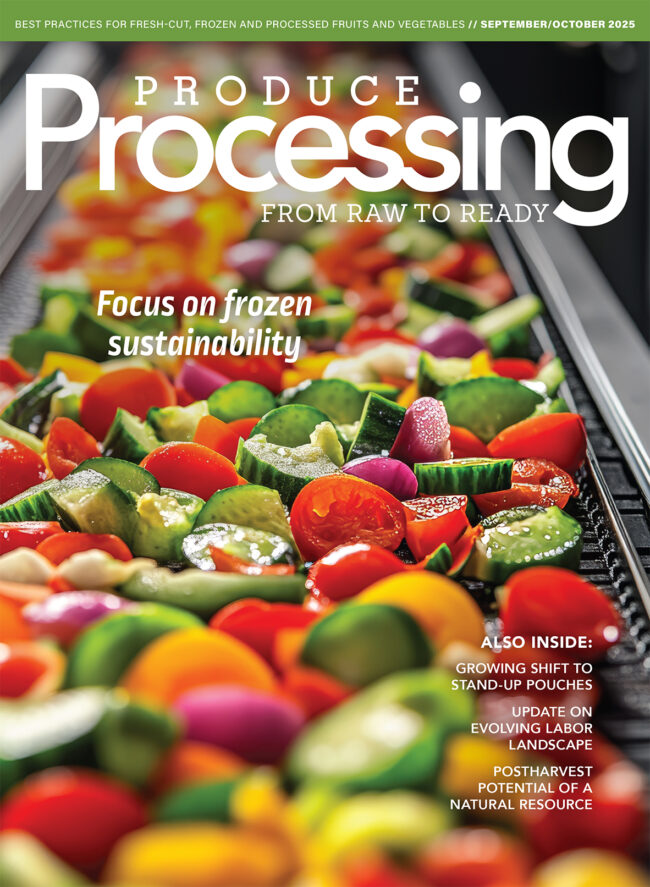Research Reduces Labor
Automated lettuce thinner might save growers money on labor
Labor is one of the biggest input costs for vegetable growers. With lettuce, the average cost for thinning and weeding in the fields is more than $120 an acre. A new automated lettuce thinner developed by the University of Arizona (UA), which could be available commercially within the next year or two, might change that.
The thinner was demonstrated at a field day at the Yuma Agricultural Center in Yuma, Ariz., in March, and in Salinas, Calif., in May.
In general, lettuce seed is sown at high rates due to poor germination rates in the fields. Two weeks after planting, farm workers weed out excess seedlings manually.
“It's very common for the thinning to be done manually, by hoe,” said Richard Smith, vegetable crop and weed science farm adviser for Monterey County, Calif.
“In 80-inch beds, human thinners can walk on the outside of the furrows and get into a kind of rhythm with the thinning,” Smith said. “They can work very fast as long as nothing stops them, like weeds. It can also be very hard for them and slow them down to reach into the center of these big beds.”
The automated thinner has three primary functions: To find plants in the field, to decide which plants to eliminate and to kill the unwanted plants.
The original sensing system was made up of photo electronic sensors to seek out the plants. However, it underperformed in finding small seedlings. The engineers switched to machine vision, which utilized a digital camera to capture images on the bed under controlled lighting.
After the machine vision system locates the plants with a camera, the computer digitizes the images so the plant shows up white on a black background. The computer decides which plants to keep and which to eliminate, said Mark Siemens, a University of Arizona ag mechanization specialist.
“Once you know where the plants are, the computer algorithm chooses which ones to keep and which ones to eliminate dependent on desired spacing,” Siemens said.
Siemens observed one lettuce field that had been hand thinned and a nearby field that had been machine thinned.
“Forty-seven days later, there was no difference between the machine thinned and hand thinned fields,” he said.
There are other mechanical thinning and weeding devices on the market.
“In orchards, there's a device not for thinning, but for weeding,” Smith said. “The way it works is the sensor drives under trees and turns a sprayer on and off whenever it sees anything green, to kill the weeds.”
Another mechanical device is an in-row weed cultivator called Robocrop, developed in England for transplanted vegetables such as cabbage, broccoli and celery, Smith said.
“It was tried as a thinner but it was less than satisfactory,” he said.
Robocrop is similar to the UA thinner, except that instead of using a spray to remove excess seedlings, Robocrop uses a mechanical, rotating cultivator.
“It reaches into the seedline to grab the seedlings mechanically,” Smith said. “When you use a spray, though, you've just got switches, which you're turning on and off very fast. When you use steel devices that are rotating, you have some delay and a limit on how fast you can go.”
The other problem with using rotating steel devices is that they disturb the soil and can cause damage to the plant roots of the remaining crop. The advantage of the UA lettuce thinner is that it leaves the soil undisturbed.
The UA prototype is designed for 40- to 42-inch vegetable beds. Many traditional vegetable beds are 80 to 84 inches. This shouldn't be a problem, since each unit is self-contained in its own modular unit. These modules could be hooked up together – as many as four to eight at a time – to be used over multiple beds, pulled by a single tractor.
The other possible application of the UA prototype is to do in-row and intra-row weeding, Siemens said.
“This is something further down the line, but using the same technology,” he said.
Here's how it would work: The computerized sensors would use the same camera technology to sense weeds. There could be multiple sprayers on the machine – one sprayer to kill unwanted seedling plants and another one to kill weeds. Additionally, there could be a third nozzle that could spray beneficial pesticides or insecticides down the rows, Siemens said.
“One nozzle would come on and the other one would shut off,” he said. “You would save multiple trips down the rows this way.”
The potential advantage to doing spot pesticide spraying like that is that growers could possibly cut back on a large percentage of their pesticide use by doing spot sprays on 3- by 4-inch beds, Siemens said.
A fair amount of work needs to be done before any of this can be available commercially, he said.
“Our next step is to go into some commercial fields and start testing this on bigger 10-acre and 40-acre blocks.”
-By Lisa Lieberman, Contributing Writer










